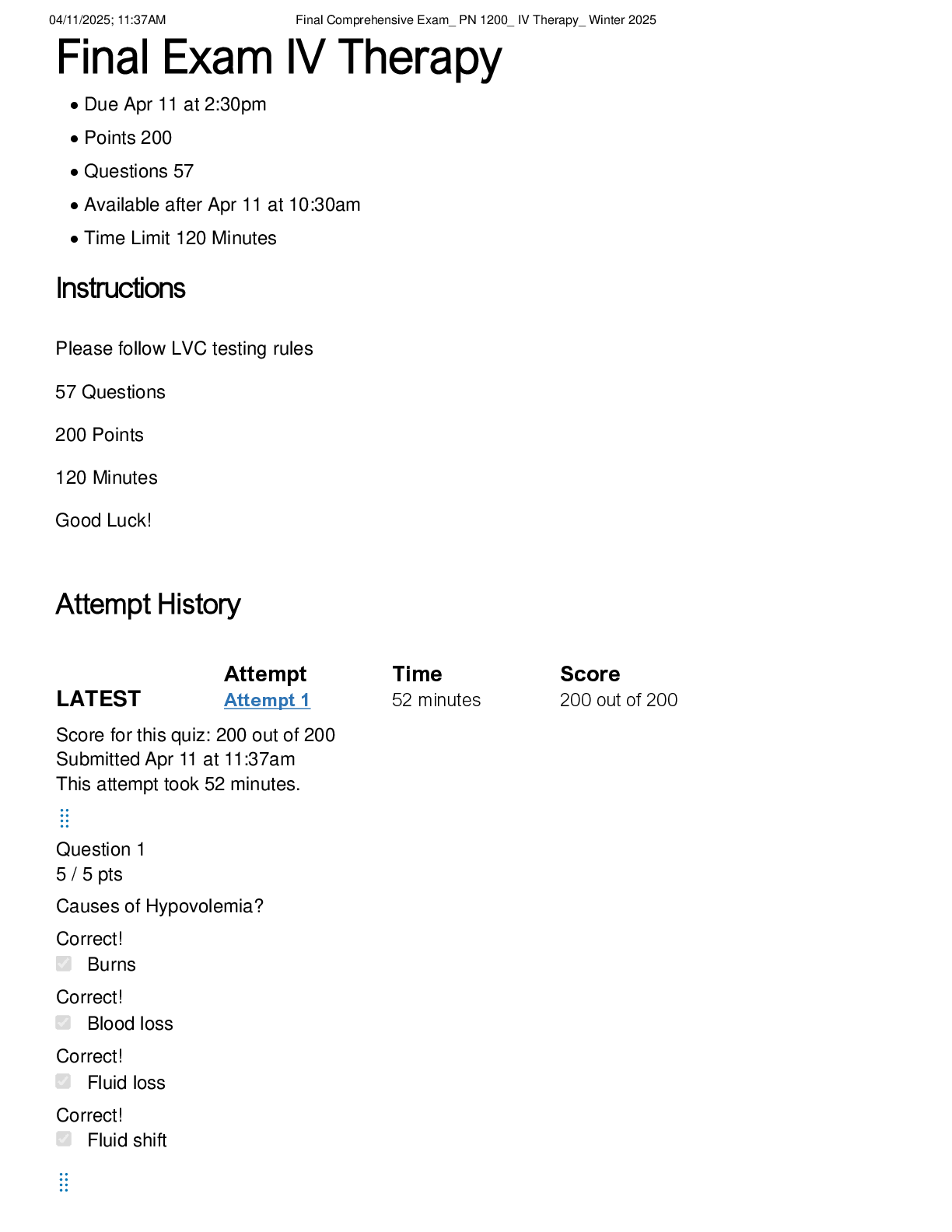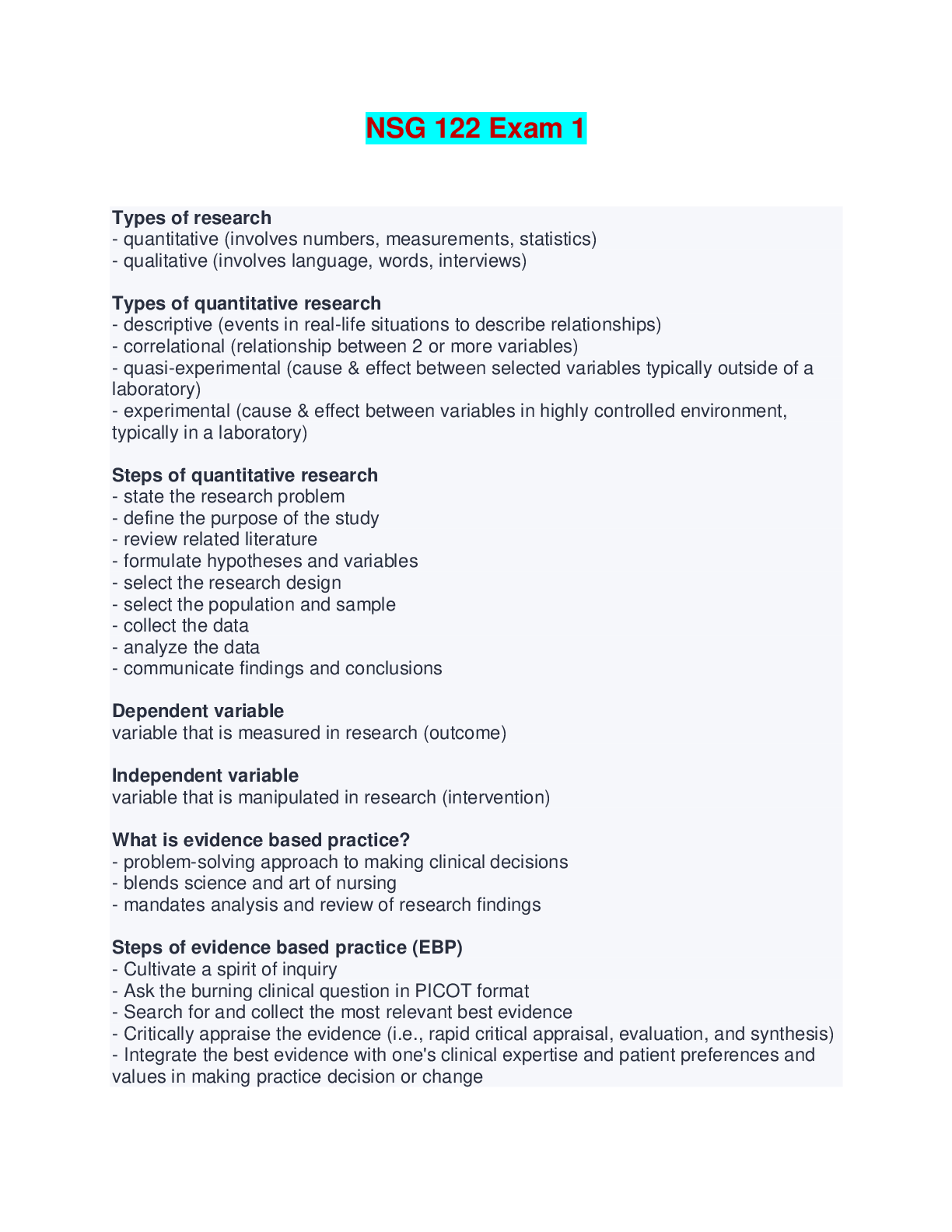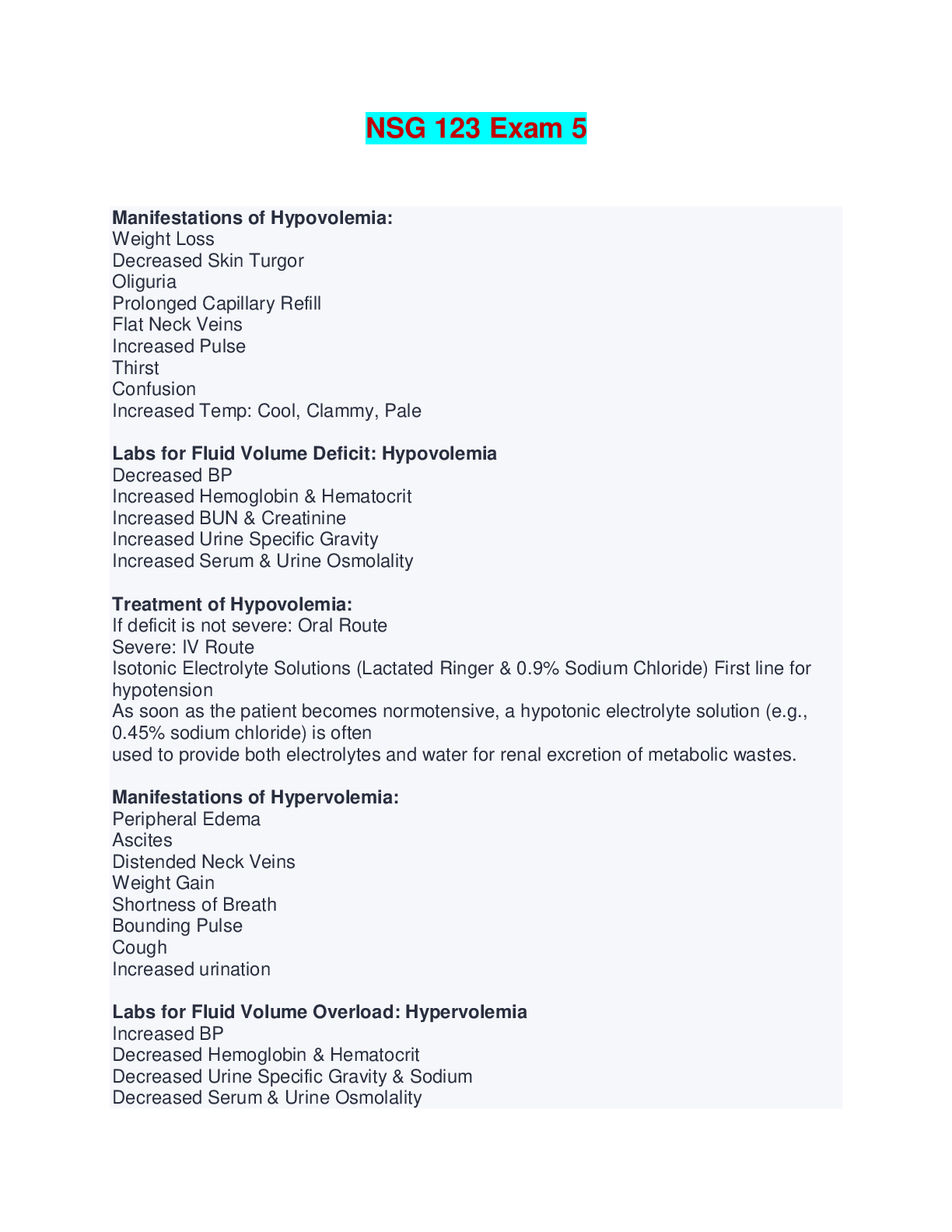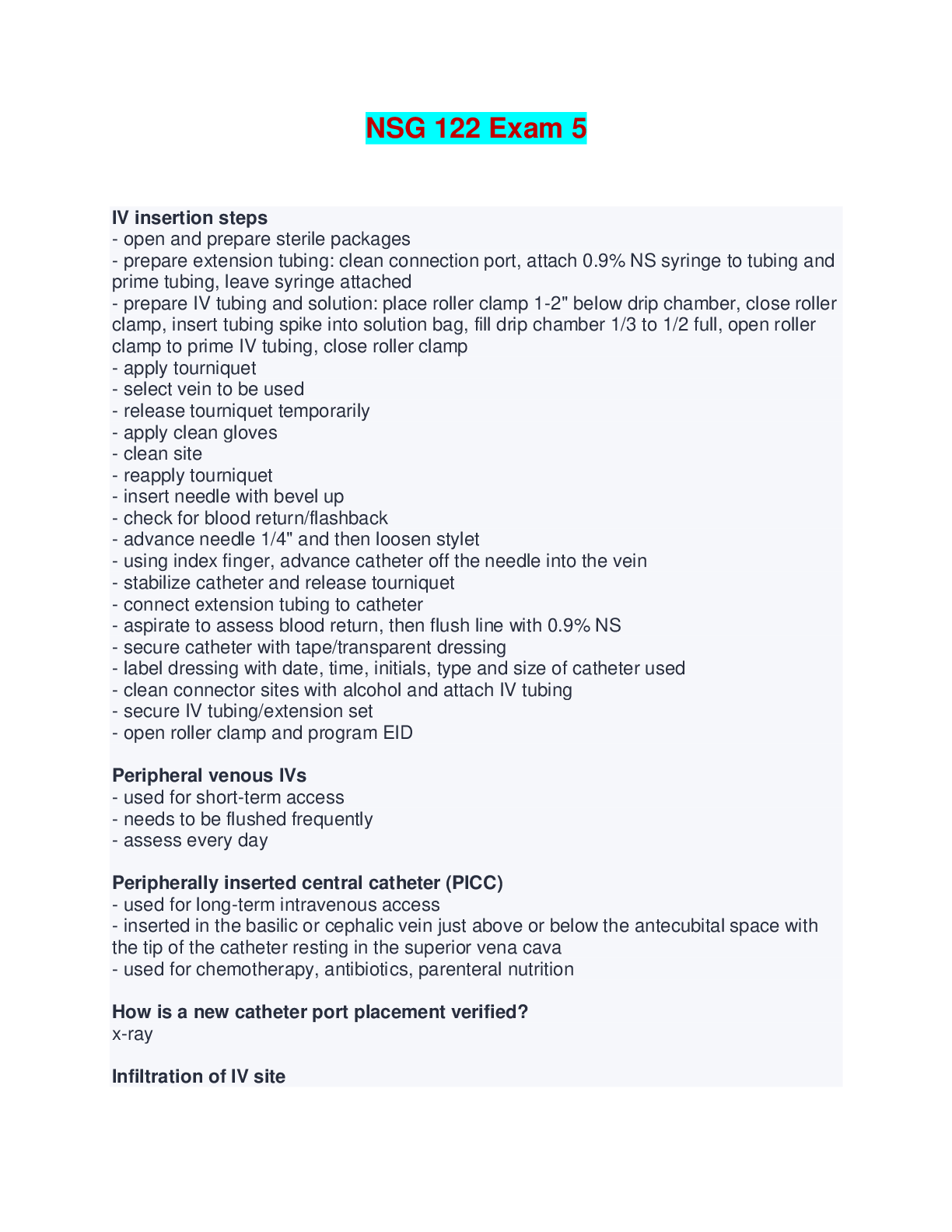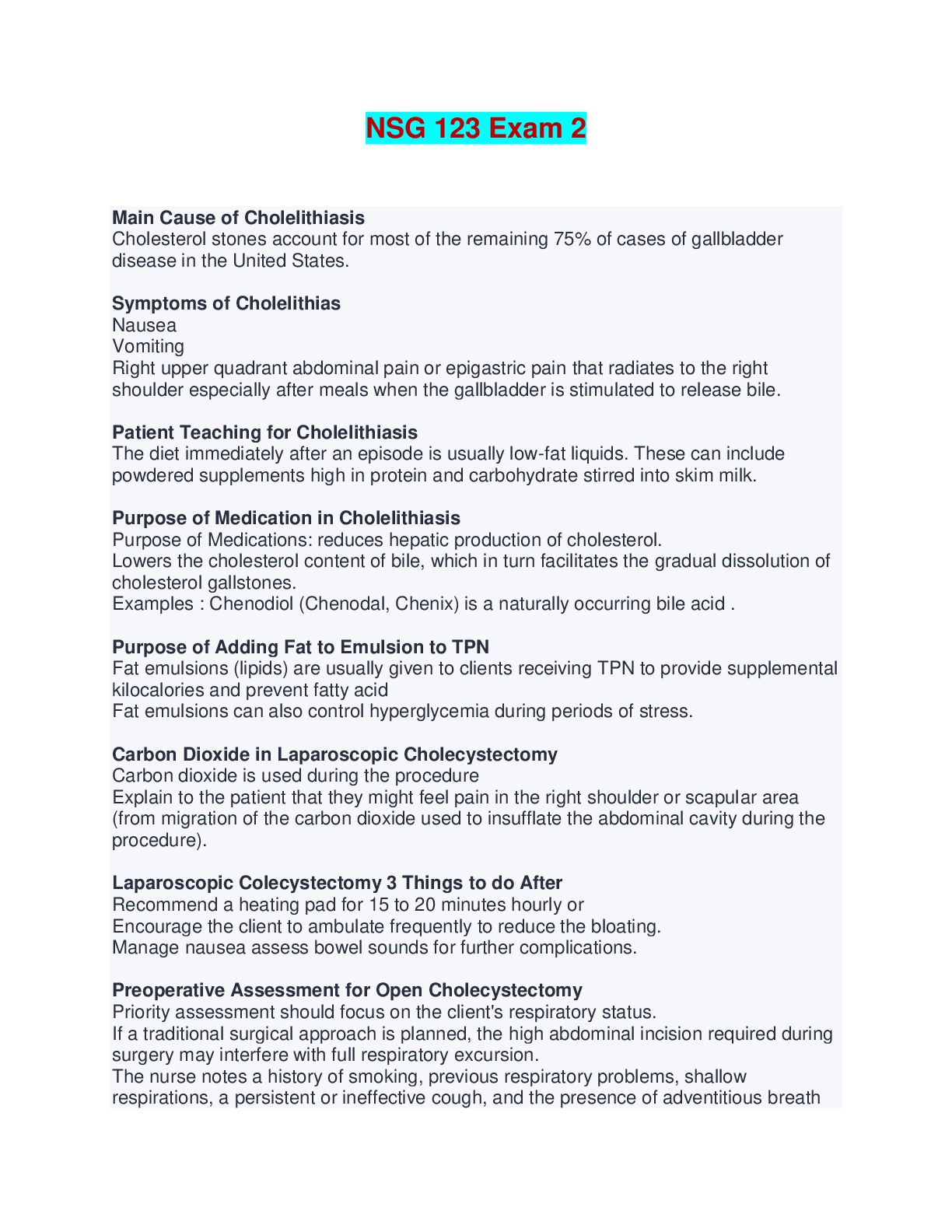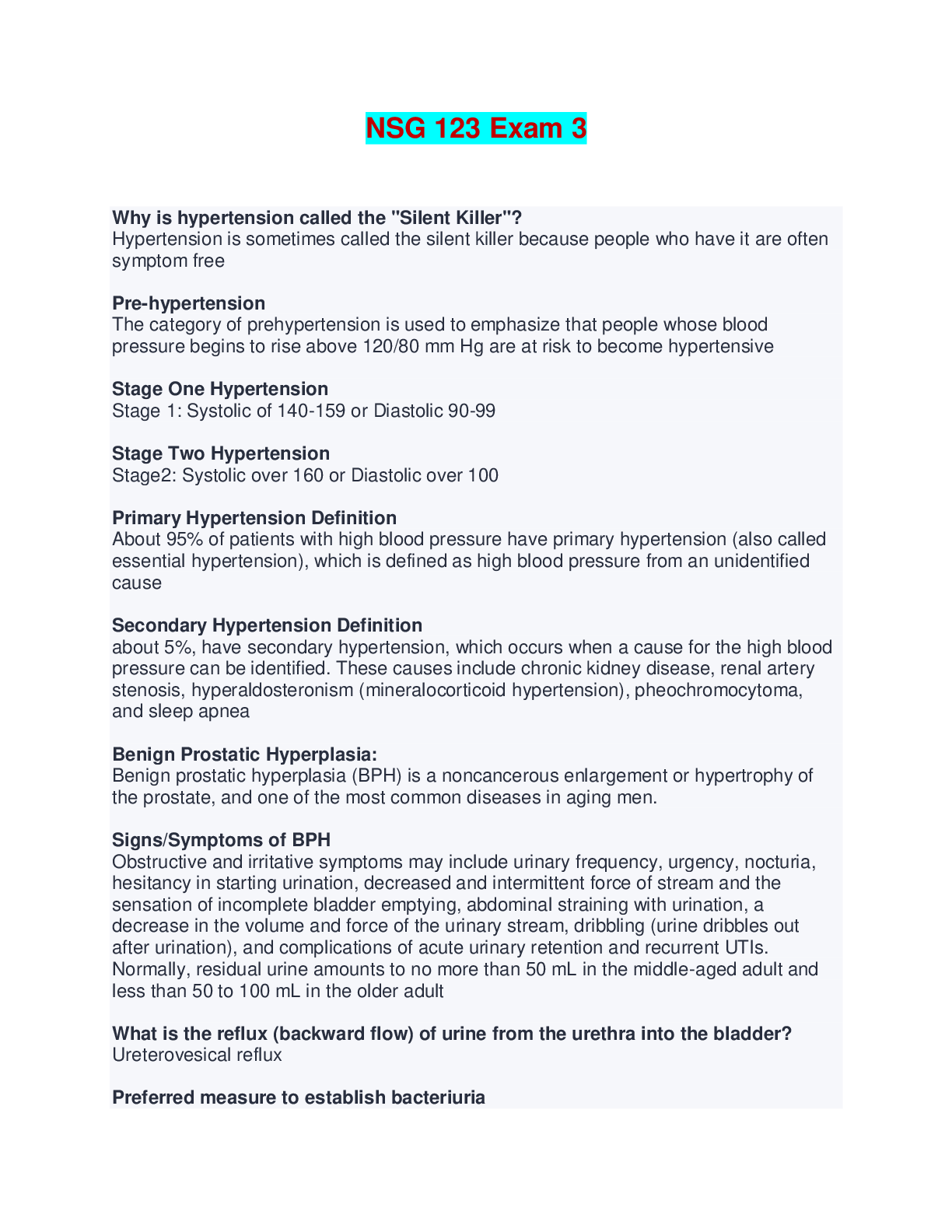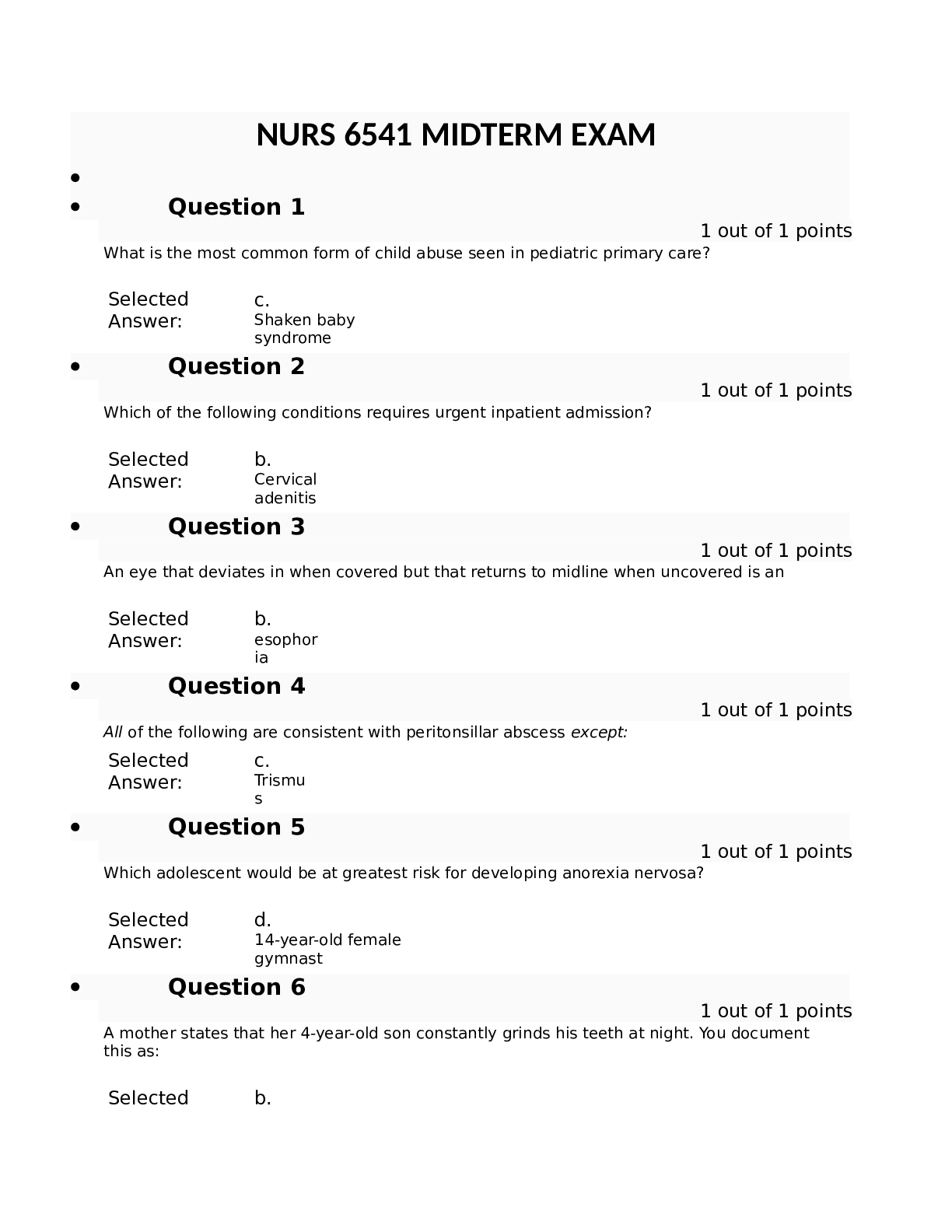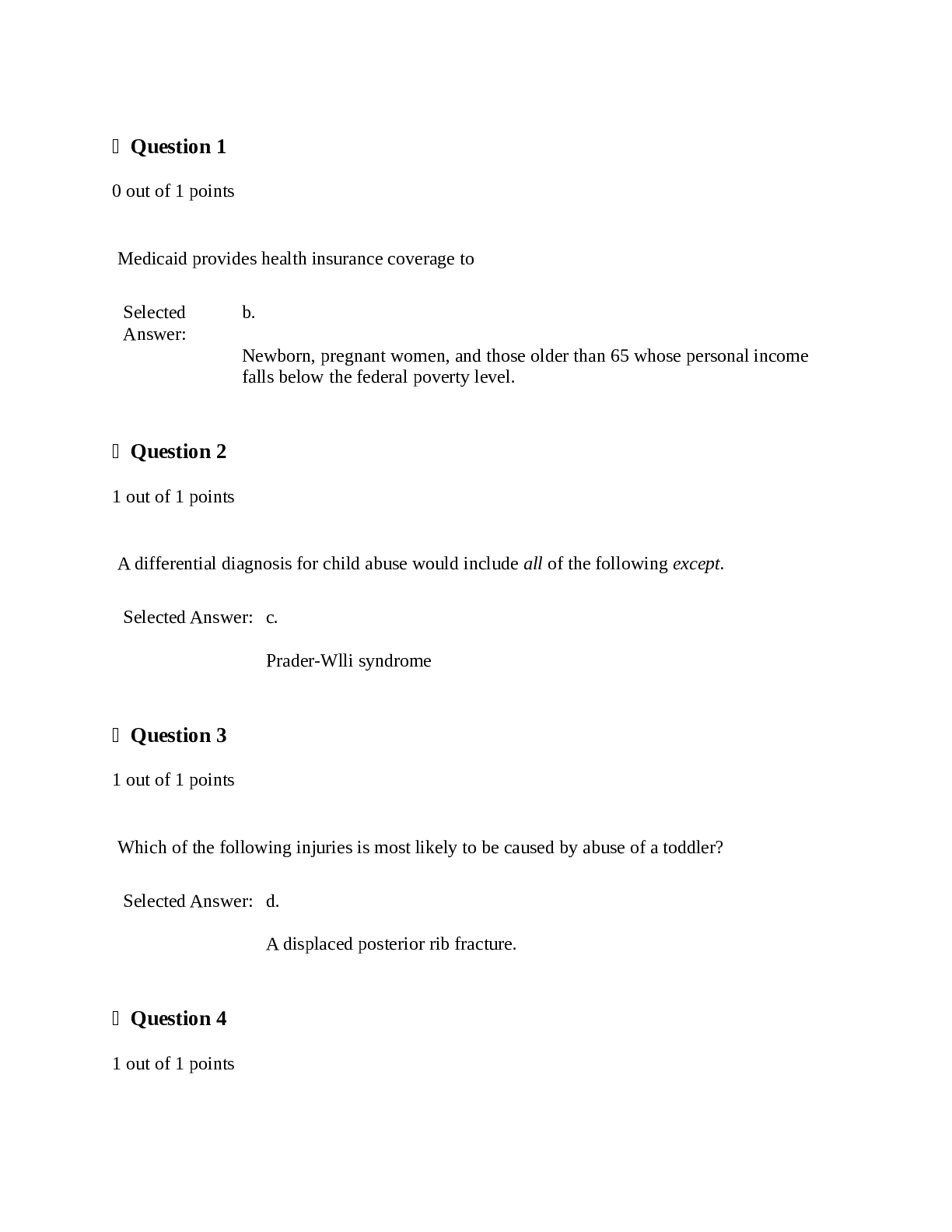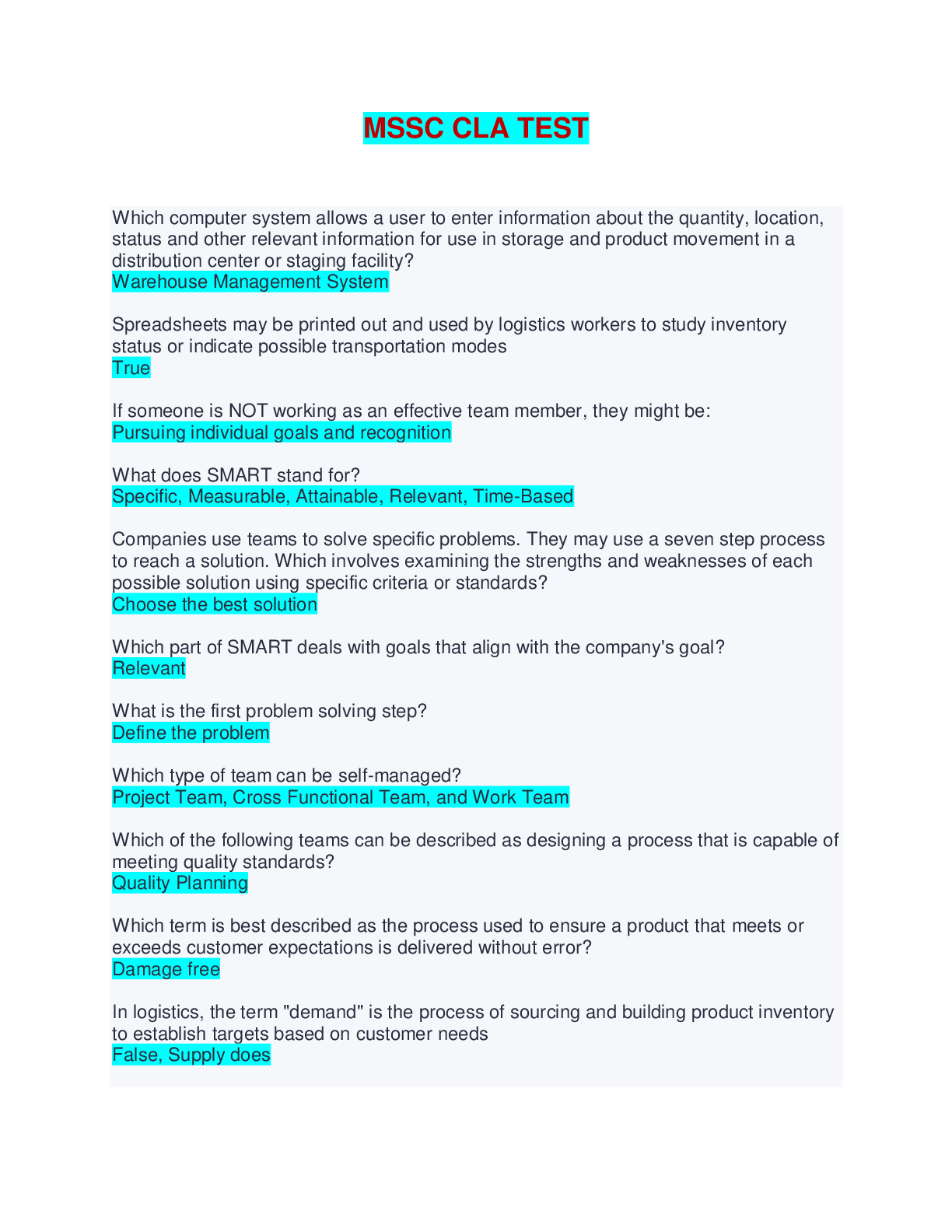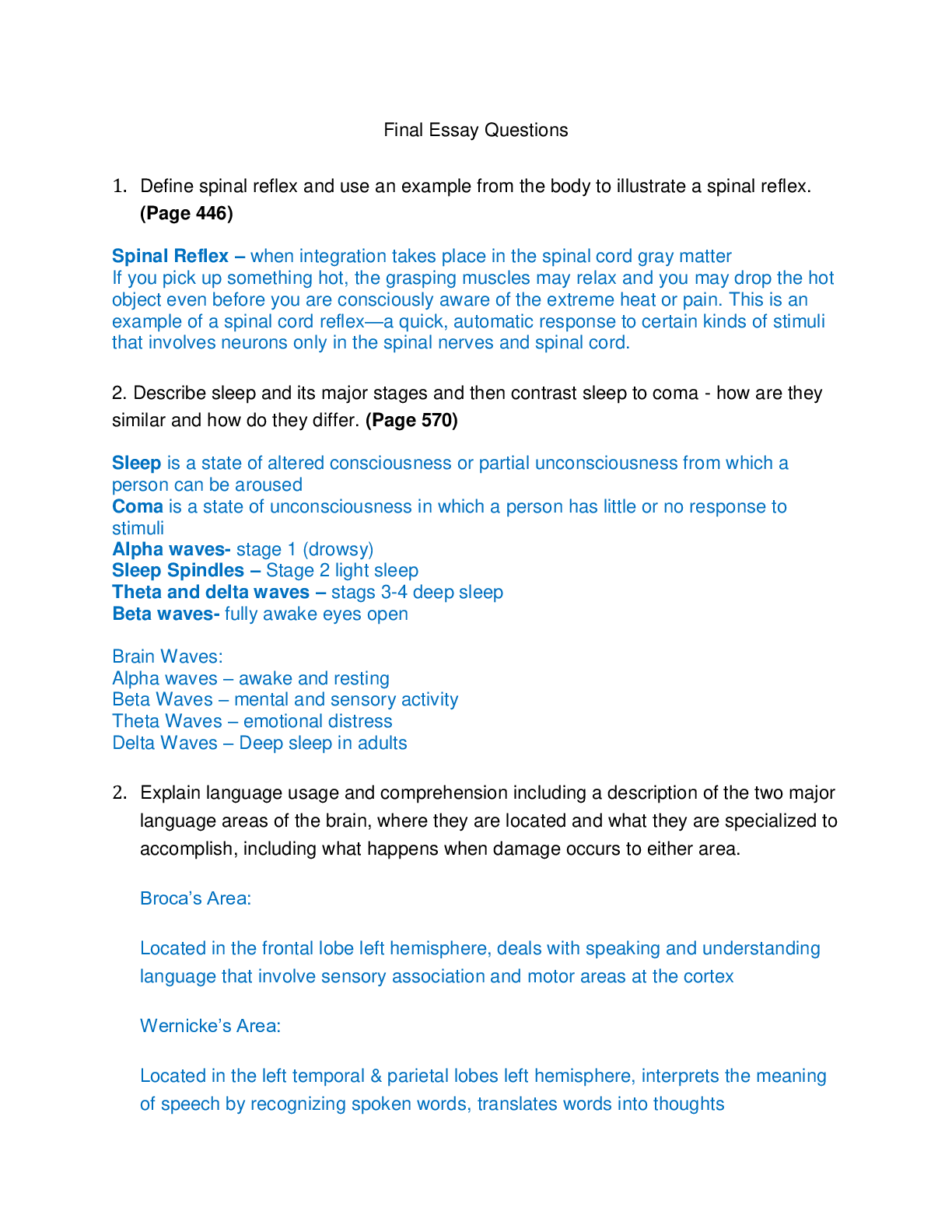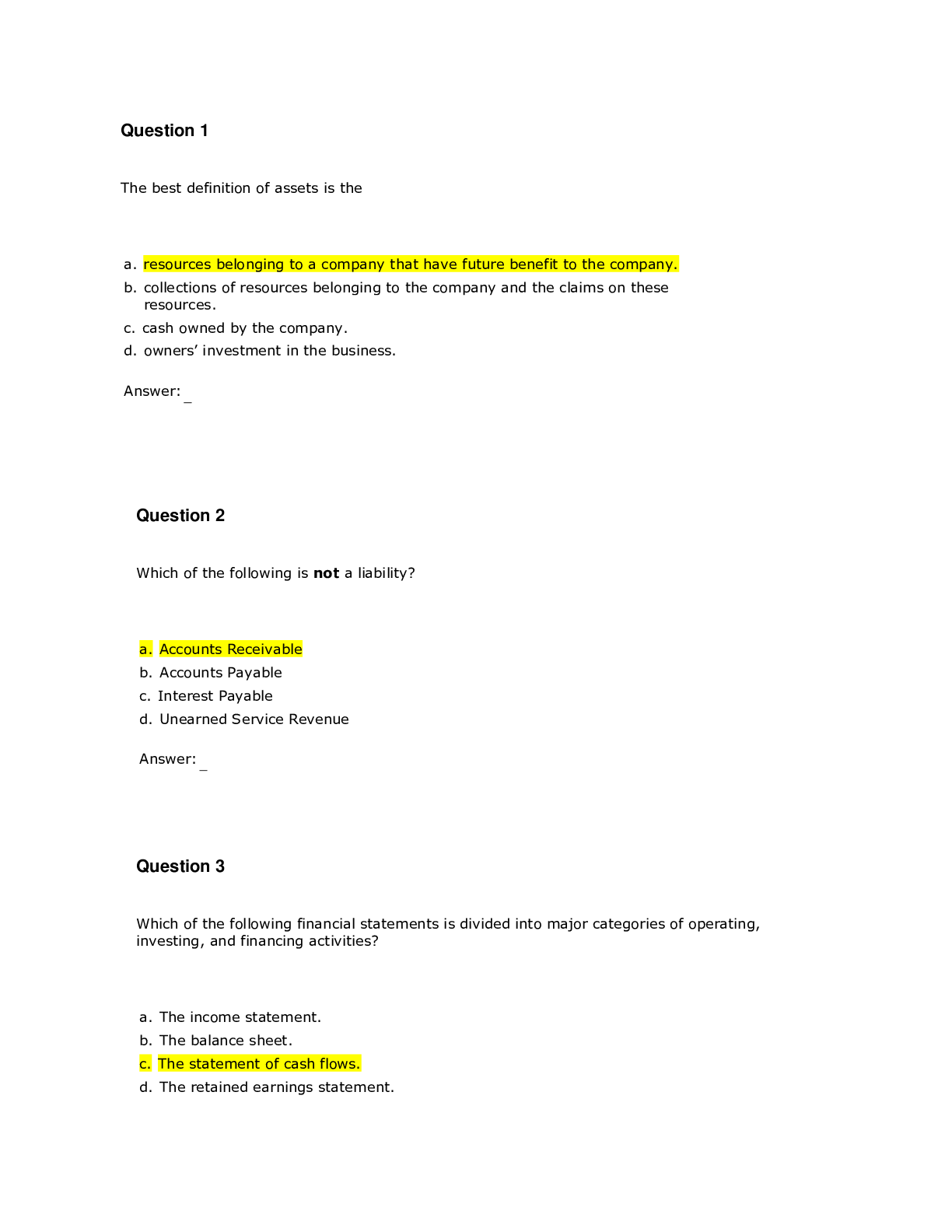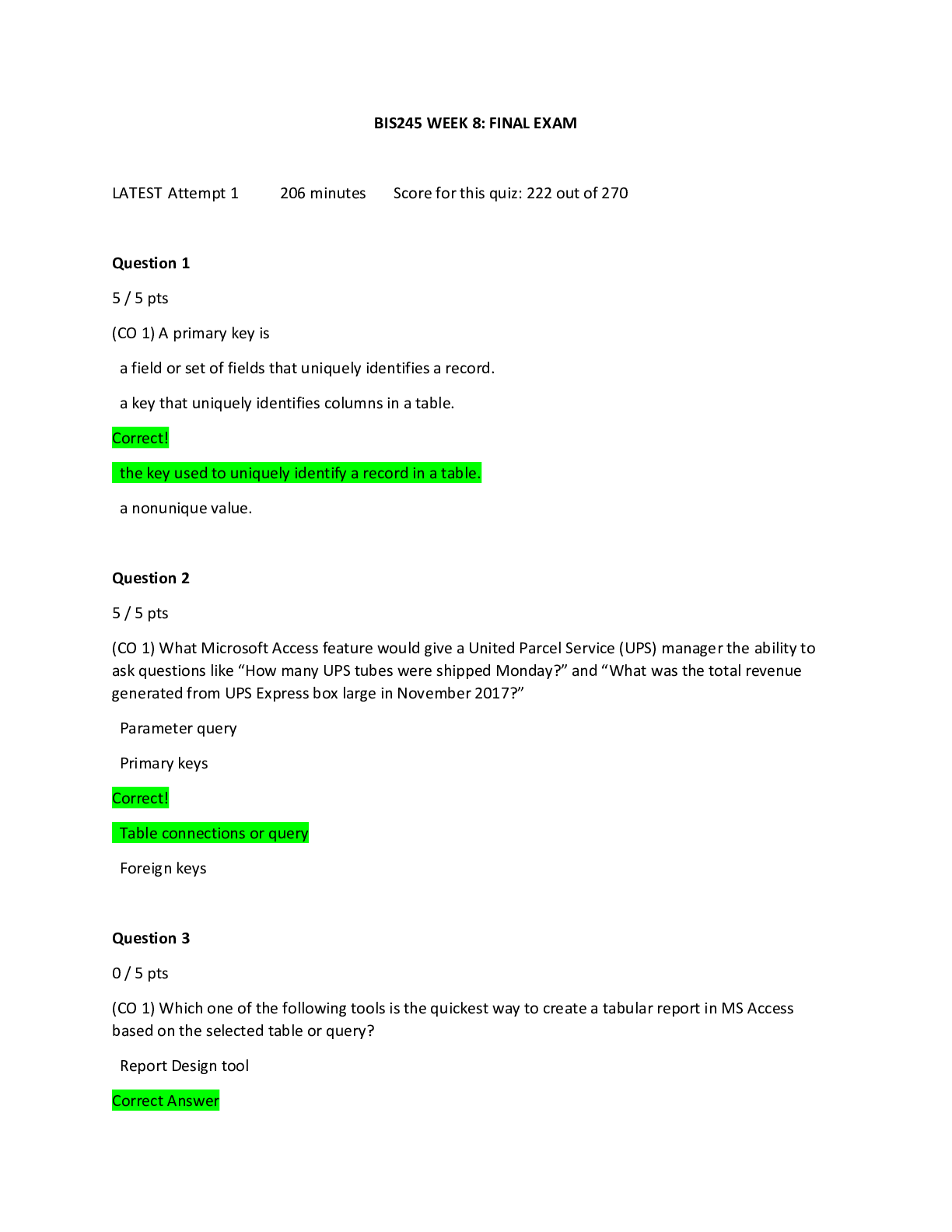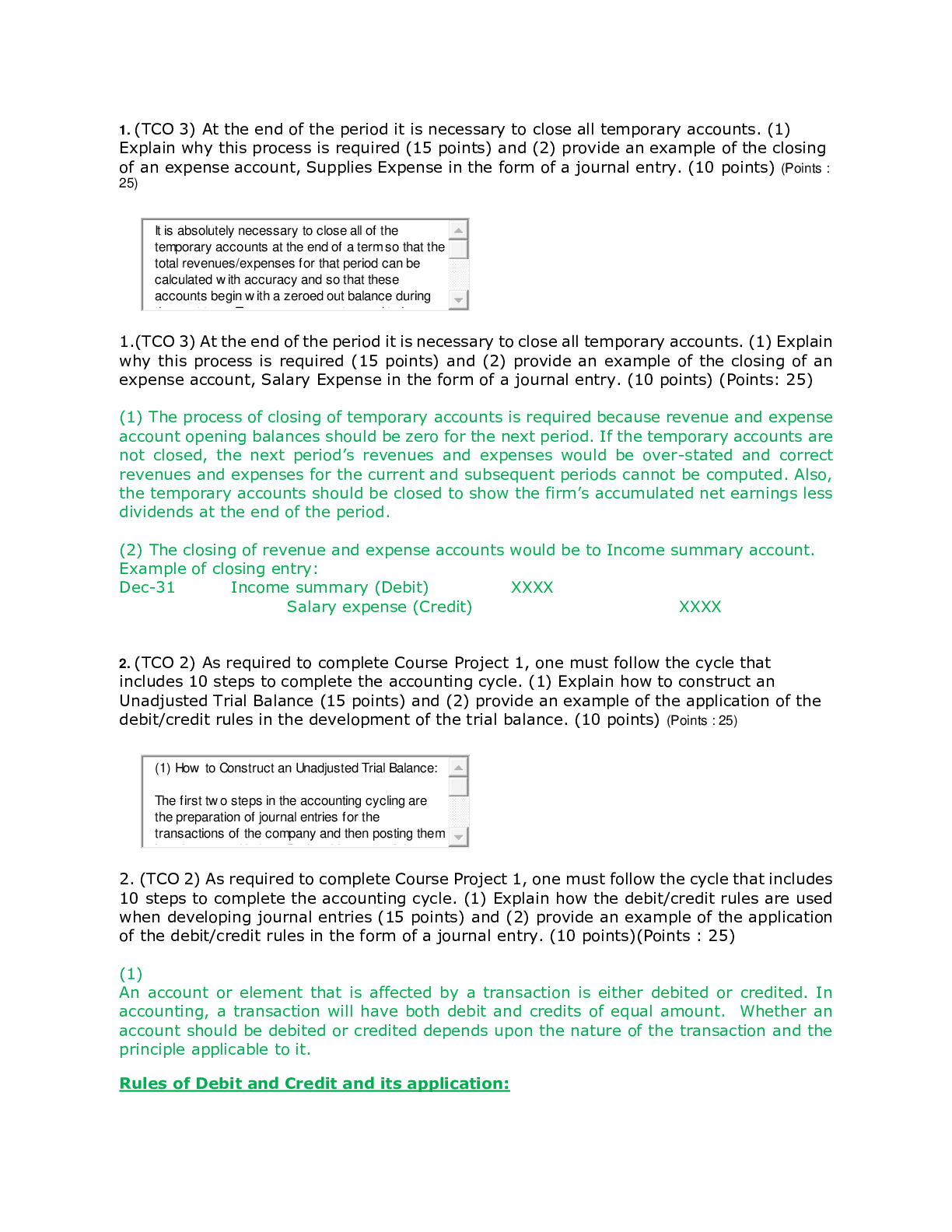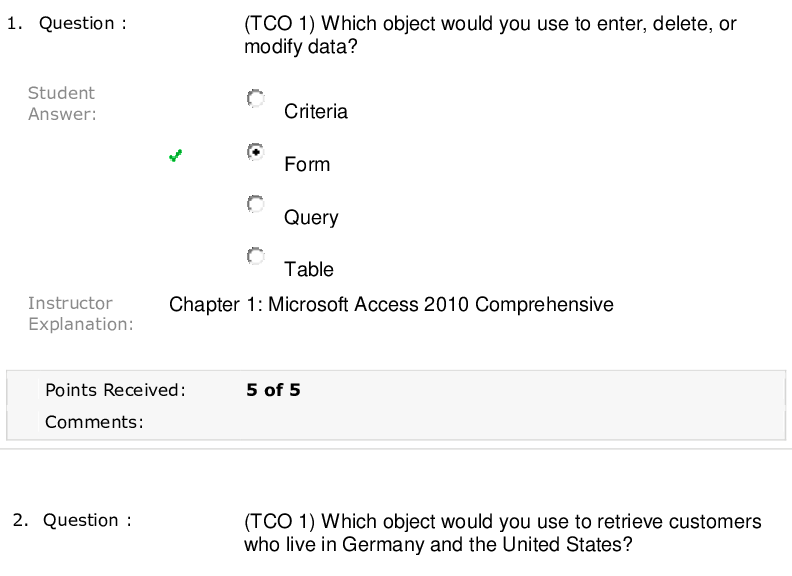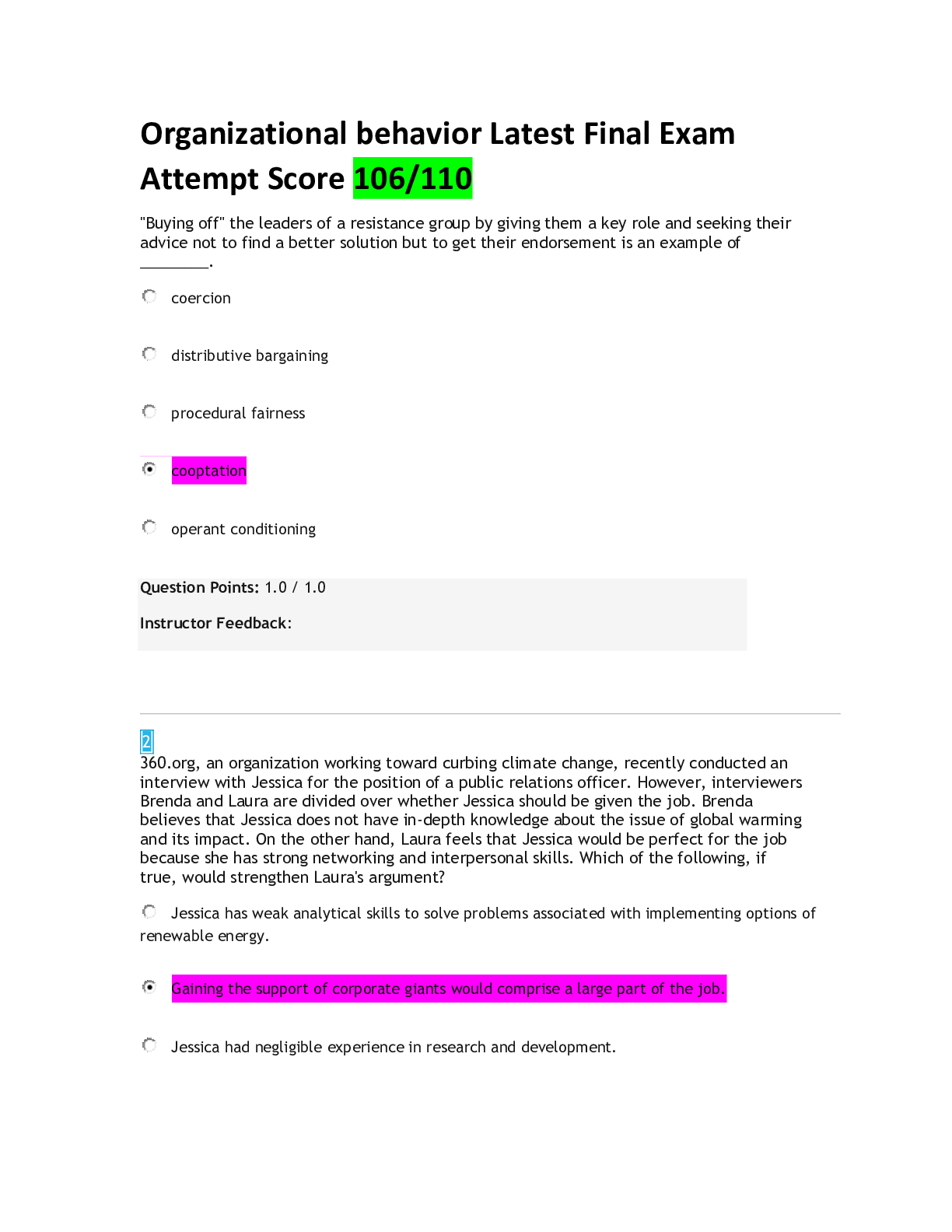Psychology > EXAM > CPSY 230 Final Exam | Complete Solutions (Answered) (All)
CPSY 230 Final Exam | Complete Solutions (Answered)
Document Content and Description Below
CPSY 230 Final Exam | Complete Solutions (Answered) Self-disclosure can increase the accuracy of communication by a. establishing a set time for sharing thoughts and feelings. b. making sure people... write down what they feel before they share information. c. improving the quality of reports and memos. d. enabling others to know how to respond effectively to an individual. The quality of feedback you receive from others depends to a large degree on a. the number of people with whom you come into contact. b. how confident you are. c. how much you practice self-disclosure. d. your presentation skills. Self-disclosure has a number of benefits, such as a. decreased self-consciousness. b. enhanced rumination. c. more social relationships. d. stronger self-awareness Which of the following is true about authenticity? a. It requires blunt honesty at all times. b. It is necessary to temper your authenticity in the workplace for the sake of professionalism. c. It is the unrestricted demonstration of one's true self through communication and interactions with others. d. Individuals who are authentic do not have an unknown area of the Johari Window. In a 360-degree feedback assessment strategy, a. low morale is likely to result, even if the assessment is well planned. b. team members discuss each other's strengths and weaknesses together. c. employees are required to self-disclose. d. the feedback is generally anonymous. Which is true of appropriate self-disclosure? a. It erodes effective professional role relationships at work. b. You can never disclose too much. c. It is a way to achieve good emotional health. d. The best Johari Window pattern includes four panes of the same size. The rules of appropriate self-disclosure include a. delaying the discussion of disturbing situations for as long as possible to diffuse emotions. b. accurately describing your feelings and emotions. c. self-disclosing, regardless of the immediate circumstances. d. learning to trust everyone with your self-disclosures. To facilitate more open communication, supervisors and managers should a. try to become employees' buddies. b. avoid developing role expectations. c. demonstrate competence and honesty daily. d. display a wide range of expectations. Emotional competence includes two major dimensions: personal competence and a. character. b. intellectual capacity. c. temperament. d. social competence. Individuals with high cultural intelligence a. frequently question themselves as to how to behave and communicate in other cultures. b. can quickly analyze and appropriately react to people and situations in unfamiliar cultures. c. possess charisma that enables them to communicate and behave in ways that are acceptable to their own culture, even while in foreign cultures. d. are only able to exercise their skill in foreign countries. It is important to manage your anger. You can do this in a number of ways, including a. giving immediate and full expression to your anger so that it doesn't build to dangerous levels. b. expressing your anger physically so that it will dissipate the intensity of the feeling. c. delaying the expression of anger as long as possible. d. becoming conscious of specific triggers of your anger. One way to effectively express your anger is by a. describing it in subtle, ambiguous terms. b. reacting in a manner that is consistent with the full depth of your emotions. c. expressing your feelings in a timely, non-accusatory manner. d. journaling about your feelings and then showing your journal to the person with whom you are angry. The emotional style that tends to make the people with whom you work lose respect for and confidence in you is that of ____ emotions. a. capitulating to b. overexpressing c. accommodating d. suppressing Individuals who think before they act and who recognize, accept, and experience their emotions while trying to express them appropriately have a(n) ____ emotional style. a. capitulating b. overly expressive c. accommodating d. suppressive One way to help yourself achieve emotional control might be to a. develop ways to help yourself capitulate to your emotions. b. give physical expression to your emotions. c. anticipate your responses by keeping close track of what touches off your emotions. d. deny and suppress any strong negative emotions until they disappear. It is possible to fine-tune your emotional style by a. taking responsibility for your emotions. b. finding others with bigger problems than your own and talking with them. c. keeping yourself very busy so that you don't have time to brood or worry. d. talking to uninvolved third parties who can objectively evaluate your feelings. To identify your emotional style, you can a. ask a friend to assess your emotional patterns. b. choose an emotional style and take on the characteristics of that style. c. take a running inventory of your emotions throughout the day, including the activities that accompanied these emotions. d. fine-tune your emotional style. Anger: a. is always irrational. b. management is a very simple but important skill to learn. c. clarifies thinking and improves decision making. d. is usually a response to a perceived injustice. Energy can be defined as a. the power of positive feedback. b. the expression of positive thoughts and feelings. c. incentive programs in the workplace. d. the force that helps us do things with vitality and intensity. Positive energy a. finds methods of increasing pay for workers. b. helps us cope with physically demanding work. c. requires feedback and appreciation. d. praises employees at the levels of senior management. Examples in Chapter 10 show that positive energy can be developed in companies by a. being more flexible with working hours and giving quick rewards. b. making employees feel valued by investing in them and their community. c. reinforcing their needs. d. managers who always demonstrate optimism. According to the Theory of the Dipper and the Bucket, when we work under a manager who berates us for mistakes but does not show appreciation for good work, a. we increase our positive emotions in defense. b. we fuel positive energy in others. c. we have greater energy. d. we experience an energy drain. Positive reinforcement is based on two facts about human nature: people appreciate recognition, and they a. want to know how well they are doing. b. prefer money or tangible rewards over verbal feedback. c. want verbal, not physical, strokes for a job well done. d. prefer to be left in the dark than to receive negative feedback. When extending praise to employees, which of the following is recommended? a. Avoid praising employees in public. b. When praising employees, simply tell them they're doing a good job. Avoid specifics. c. Refrain from praising employees more than once every few months so they don't demand a salary increase. d. Praise people immediately. Kyoko is managing a team of people who are working on a critical project. She wants to use positive reinforcement, but her days are so busy that she never seems to find the time. What should Kyoko do to best overcome this obstacle to the use of positive reinforcement? a. Ask the employees what they want her to say or do. b. Put her own needs aside, lengthen her days, and continue dipping from her "bucket." c. Give everyone a pay raise upon the project's completion. d. Plan and set aside a few minutes each day to provide positive feedback. When it comes to rewarding individual and team performance, it is important to remember that a. team incentives are the only ones that result in a "bottom-line" difference for a company. b. rewarding and reinforcing are supervisory responsibilities. c. employees prefer tangible to intangible rewards. d. managers can benefit from positive reinforcement from their subordinates. Which of the following is likely to contribute the least to positive energy in the workplace? a. Encouraging workers to be prideful of their accomplishments. b. Awarding all incentives with cash. c. Practicing common courtesies. d. Providing feedback and affirmation to employees. An example of someone in the flow state is: a. a child who spends hours happily building structures with blocks. b. a painter staring at a blank canvas, seeking inspiration. c. a plumber working voluntary overtime for some extra money. d. a stressed executive who works for hours on a report to meet a deadline. When it comes to making a good impression in a work setting, a. it does not apply to an initial contact, since both people are meeting for an express purpose. b. you have a 5- to 10-minute grace period before people form their impression of you. c. your handshake and facial expression dominate all other elements of your appearance. d. you have only seconds in which a person will accept or reject an employee or firm. According to the authors, which of the following is not one of the 12 major factors that form your image? a. Self-confidence b. Handshake c. Traditions d. Dress and grooming "Judging a book by its cover" summarizes the impact of a. etiquette. b. personal charisma. c. integrity. d. surface language. Which of the following is an example of career apparel? a. The gray suit and white shirt of an attorney b. A receptionist in a white blouse and navy blue skirt c. An automobile technician dressed in tan pants, blue shirt, and brown shoes d. All of these ____ is the pattern of immediate impressions conveyed by appearance, which includes the clothing, hairstyle, fragrance, and jewelry that a person chooses to wear. a. Wardrobe engineering b. Surface language c. Grooming d. Etiquette Which of the following contributes to your voice quality? a. Tone of voice b. Volume of your speech c. Diction or clarity of pronunciation d. All of these Facial expressions a. conceal inner emotions more effectively than words do. b. usually have little to do with the positive or negative impressions others form. c. are important cues that help others read your mood and personality. d. are less important than "good looks" in communicating a positive impression. Good manners are essentially a. thinking of the welfare of another, as expressed through kind, considerate behavior. b. relaxed informality in the workplace. c. rules established by older people who are rather inflexible and stoic. d. traditional rules for behavior passed down over many years. Which of the following would not be a positive result of self-managed teams? a. Individual members learn new skills, knowledge, and networks. b. Members become accountable for work of the total team. c. The team achieves synergy through similar thinking patterns. d. The team is focused, disciplined, and committed to objectives. When an organization has a leadership style that emphasizes team building, you tend to also have a. higher productivity and profitability. b. greater job satisfaction and lower stress for employees. c. outcomes that are greater than the sum of the various inputs. d. all of these. One of the most effective ways to align how a team will work together and facilitate team involvement is to _____. a. increase team synergy b. minimize member diversity c. create team core values d. provide educational materials Organizations in America are using teams because: a. there is not one overall "best" management style. b. there are so many layoffs and mergers. c. leaders find it saves them money. d. team building has proven to be an effective strategy. Common characteristics of successful leaders include character and high emotional intelligence. It follows that a. some individuals are genetically predisposed to become leaders. b. individuals can develop strong leadership qualities. c. leaders are highly sociable and dominant. d. there is one universal "best" style of leadership. Good advice for anyone who wants to become an outstanding leader is to be guided by the law of empathy, which states: a. Leaders engage in candid personal conversation with those they lead. b. Leaders recognize individuals' accomplishments and celebrate them. c. Leaders are sensitive to and aware of the needs, feelings, and motivations of those they lead. d. Leaders create structure within the organization. To help promote purposeful action and sustained improvement, leaders must often assume the role of a. follower. b. superior. c. coach. d. coworker. Without ____ it is impossible to build a trusting relationship with the people you lead. a. charisma b. strength c. intelligence d. character One important way to become a respected team member in an organization is to a. form a sub-alliance within the team. b. go along with the team regardless of your personal feelings or ideas. c. express your own views. d. avoid self-disclosure. Conflict in organizations a. can serve as an opportunity for growth. b. often has negative consequences, and therefore must be managed carefully. c. can clarify relationships and provide new ways to think about issues. d. can result in all of these effects. Assertive behavior a. tends to violate the rights of others. b. is a way of making a point without upsetting others. c. always helps you achieve what you want. d. is the equivalent of aggressive behavior. [Show More]
Last updated: 3 months ago
Preview 4 out of 18 pages

Loading document previews ...
Buy this document to get the full access instantly
Instant Download Access after purchase
Buy NowInstant download
We Accept:

Reviews( 0 )
$16.00
Can't find what you want? Try our AI powered Search
Document information
Connected school, study & course
About the document
Uploaded On
Feb 26, 2025
Number of pages
18
Written in
Additional information
This document has been written for:
Uploaded
Feb 26, 2025
Downloads
0
Views
17

